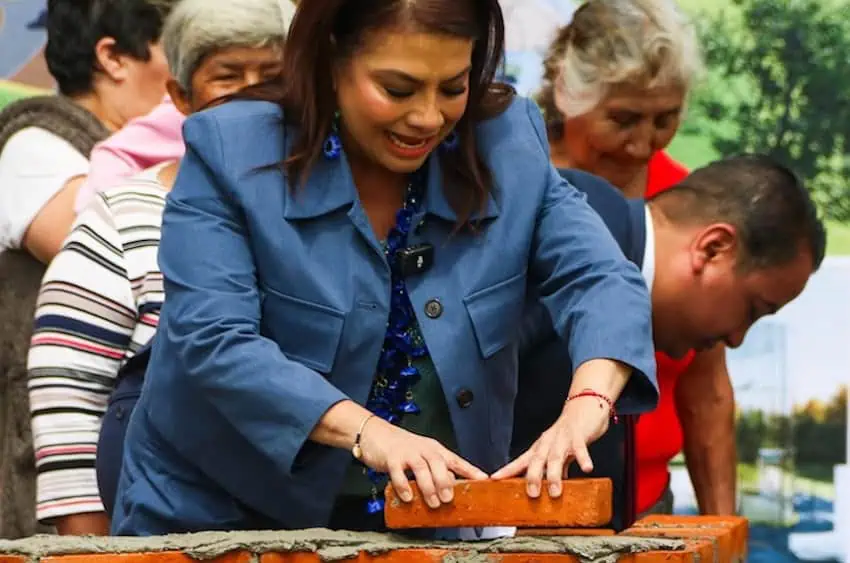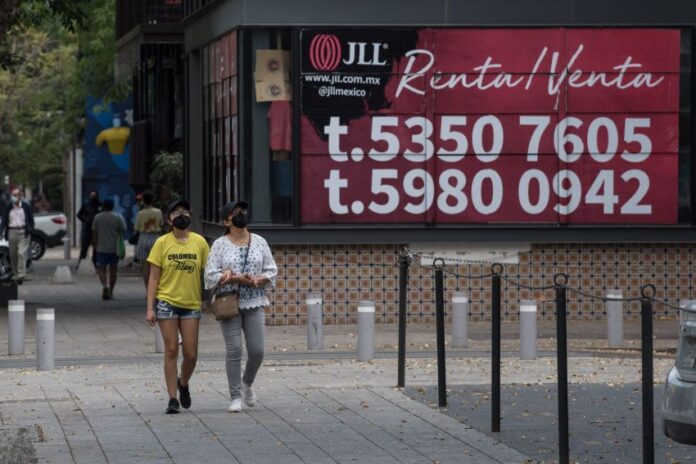Calling for rent control and other measures, political leaders in Mexico City have unveiled a sweeping plan aimed at fighting gentrification, a trend where rising rents and home prices push longtime residents out of neighborhoods.
Under “Order 1 for a Livable and Affordable City with Identity and Local Roots,” officials announced measures to cap rent increases, create a rental price index, and regulate Airbnb and other short-term rentals.

Mexico City Mayor Clara Brugada lauded the Housing Master Plan, which also includes an initiative to create thousands of new, affordable rental units that she announced last week.
“We have made a firm decision: to confront gentrification through public policies focused on housing justice,” she said.
She cited examples in Berlin, London and Rome where rent stabilization policies have helped preserve affordable housing, adding that “there are areas [in Mexico City] where rent prices have doubled from one year to the next, reaching increases of 100% without objective justification.”
This increase, she said, “leads to the expulsion of residents who have lived in the neighborhoods their entire lives.”
The push for new regulations in Mexico City comes amid rising demonstrations, such as a recent protest against gentrification in the Condesa neighborhood.
The ordinance — which aims to protect residents’ rights while fostering stable, inclusive communities in rapidly evolving urban neighborhoods — names 14 key actions.
These include establishing a Reasonable Rental Price Index to gauge fair rents based on factors such as property value, location and local income levels.
The government will also enforce a law enacted in 2024 prohibiting rent increases beyond last year’s inflation rate, create a new Office of the Tenant Rights Ombudsman to protect renters from eviction abuses, and propose a “Fair, Reasonable and Affordable Rent Act” to formalize rent controls.
Aiming to reduce inequality and control real-estate speculation, the plan targets neighborhoods in the Cuauhtémoc and Miguel Hidalgo boroughs — areas facing the steepest rent hikes.
“It will include the Hipódromo, Condesa, Juárez, Roma Norte, Roma Sur, Doctores and Buenos Aires neighborhoods in Cuauhtémoc, and in Miguel Hidalgo Escandón in its two sections, and San Miguel Chapultepec first and second sections,” explained Mexico City Planning and Territorial Development Minister Alejandro Encinas.
Additionally, the government aims to boost construction of affordable public housing and provide support programs for vulnerable groups like single mothers and seniors.
Experts note the city’s chronic housing shortage fuels gentrification, with six in 10 residents living in overcrowded homes.
Federico Sobrino, president of the Mexico chapter of the International Federation of Real Estate Agents (FIABCI), said the underlying problem is not Airbnb or foreigners, but rather the lack of new housing in the capital .
“The solution is to allow construction,” he said. “There are those who want to invest in it, but the permit process is closed. This would be perfectly viable if the mayoralties were given the power, but we don’t want to lose central control and all the revenue it entails. This dynamic forces people to move to peripheral areas.”
He said that over the past 15 years, 75% of people in Mexico City who have received housing loans through Infonavit (the Institute of the National Housing Fund for Workers) have been using their loans in the State of México, due to the high cost of purchasing a home in CDMX.
These types of Infonavit loans are intended to help workers buy, build or improve an existing home, making home ownership more accessible.
Though landlords are generally wary of rent controls, real estate professionals acknowledge the need for mechanisms to balance tenant protections and property owners’ interests.
Brugada said that all measures and actions aimed at curbing gentrification in Mexico City “will be discussed with all those who wish to contribute, debate, propose and discuss this issue.”
She added that there will be working groups, forums and meetings — noting that she has already invited the leaders of anti-gentrification marches to participate.
With reports from El Economista, El Universal and Chilango.com
